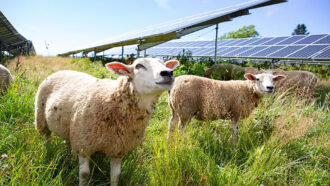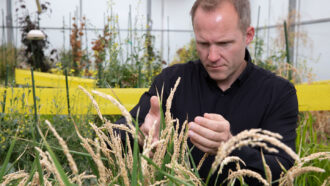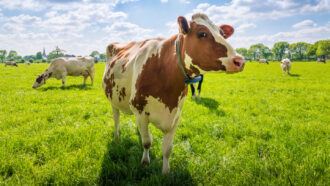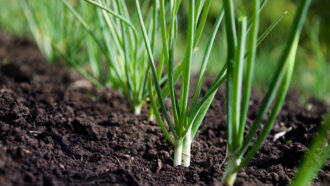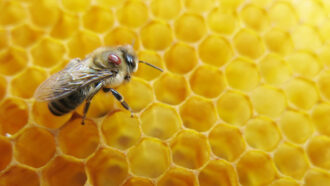Protecting cows—and people—from a deadly disease
Mad cow disease has appeared in the United States, but scientists say it can be contained easily.
Chomping at a juicy hamburger might be a little less tempting than it once seemed. It took just one case of mad cow disease, discovered in December, to make several countries ban imports of U.S. beef. Officials in Japan and elsewhere are afraid that people may eat infected meat and develop the human version of mad cow disease.
Mad cow disease gets its name because cattle infected with it behave strangely. They seem nervous and distressed. They can’t stand or walk properly.
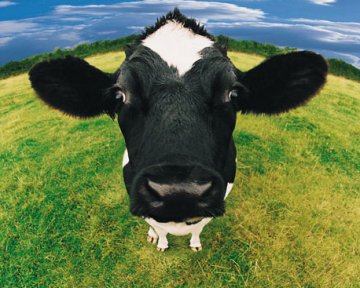 |
|
Mad cow disease causes cattle to behave strangely.
|
These symptoms are caused by the breakdown of the animal’s nervous system. Deformed proteins, known as prions, multiply and worm their way through an infected cow’s brain and nerves, making the tissue look like a sponge.
These prions have a similar effect in people. They can cause the fatal human disease known as variant Creutzfeldt-Jakob disease (vCJD). Eating infected beef is the only known way for the prions to go from a cow to a person.
Consuming infected meat is also the main way prions are transferred from one cow to another. This can happen because of an old method of producing food for cows. When cows were slaughtered for their meat and hides, some of their remains—including their brains, eyes, spinal cords, and intestines—used to be processed to make animal feed containing protein.
This type of feed was banned in 1997 when scientists realized that it was responsible for the spread of mad cow disease.
Christl Donnelly of Imperial College in London says that as long as the ban on this type of feed is enforced, mad cow disease shouldn’t spread in the United States. This means it’s also highly unlikely the disease would spread to people.
Officials at the U.S. Department of Agriculture are taking an extra precaution. They’re planning on tracking every cow that will be used for beef, from its birth until it ends up in the grocery store.
Going Deeper:
Harder, Ben. 2004. Cow madness: Disease’s U.S. emergence highlights role of feed ban. Science News 165(Jan. 10): 19-20. Available at http://www.sciencenews.org/20040110/fob2.asp .
Milius, Susan. 2003. Mad cow future: Tests explore next generation of defenses. Science News 163 (May 31): 340. Available at http://www.sciencenews.org/20030531/fob3.asp .
Raloff, Janet. 2003. Calling all cows. Science News Online (Oct. 4). Available at http://www.sciencenews.org/20031004/food.asp .
You can learn more about mad cow disease at kidshealth.org/kid/talk/qa/mad_cow_disease.html (KidsHealth for Kids) and faculty.washington.edu/chudler/bse.html (Neuroscience for Kids).


